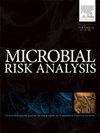An international disease monitoring tool to estimate the likelihood of entry of animal health hazards from legal trade of live animals and products of animal origin imported from different countries (IDM+)
IF 4
4区 环境科学与生态学
Q2 ENVIRONMENTAL SCIENCES
引用次数: 0
Abstract
Trade of live animals and products of animal origin (POAO) carries an inherent risk of spreading pathogens. As such, it is essential for any country to have effective early detection and/or horizon scanning systems in place to be aware of the potential entry risks of pathogens. To this end, the United Kingdom has a number of horizon scanning and risk assessment tools to carry out international disease monitoring. Here we develop these ideas further in a generic, semi-quantitative risk assessment tool; the International Disease Monitoring Plus (IDM+) tool.
The IDM+ tool utilises publicly available data on the presence of terrestrial animal health pathogens and volumes of commodities imported into Great Britain (GB) from multiple trading partners. Identifying the likelihood of a pathogen arriving at the GB border involved >550 individual commodity types, 125 pathogens and 55 countries. It also includes expert opinion on country and commodity specific mitigation measures, to derive a likelihood of entry score for each country, commodity, and pathogen combination.
This paper presents an example of the model used to assess commodities being imported into GB. However, the principle could be applied to any country accepting imports of live animals or POAO.
The IDM+ model considers changes in global pathogen distribution and trade volumes to provide ongoing and rapid appraisal of the likelihood of entry for different commodities, countries, and pathogens. It is designed to be quick to run with a largely automated process, further enabling rapid updates with new disease and trade source and volume data. The model can present results with and without trade volume weighting and with different likelihoods. When a specific import disease risk is identified to be of concern, carrying out a comprehensive import risk analysis is still recommended. However, this model is a valuable tool to provide a holistic overview and comparison of the likelihood of entry to GB of a large number of potential threats to animal health. It can be utilised in time-constrained environments and when limited data are available. The results can be of direct use for a variety of purposes, including, but not limited to, prioritisation of border inspections and in-country audits, rapid output generation for emergency outbreak assessments and/or assessing risk from specific imported consignments.
一种国际疾病监测工具,用于估计从不同国家进口的活体动物和动物源性产品的合法贸易带来动物健康危害的可能性(IDM+)
活体动物和动物源性产品的贸易具有传播病原体的固有风险。因此,任何国家都必须具备有效的早期发现和/或水平扫描系统,以了解病原体的潜在入境风险。为此,联合王国拥有若干水平扫描和风险评估工具,用于开展国际疾病监测。在这里,我们进一步发展这些想法在一个通用的,半定量的风险评估工具;国际疾病监测+ (IDM+)工具。IDM+工具利用有关陆生动物卫生病原体存在情况和从多个贸易伙伴进口到英国的商品数量的公开数据。确定病原体到达英国边境的可能性涉及550种单独商品类型、125种病原体和55个国家。它还包括关于国家和特定商品缓解措施的专家意见,以得出每个国家、商品和病原体组合的入境可能性得分。本文给出了一个用于评估我国进口商品的模型实例。然而,这一原则可适用于任何接受活体动物或POAO进口的国家。IDM+模型考虑了全球病原体分布和贸易量的变化,以便对不同商品、国家和病原体进入的可能性进行持续和快速的评估。它的设计目的是通过一个基本自动化的过程快速运行,进一步实现对新的疾病和贸易来源和数量数据的快速更新。该模型可以给出有和没有交易量加权以及不同可能性的结果。当确定某种特定的进口疾病风险值得关注时,仍建议进行全面的进口风险分析。然而,该模型是一个有价值的工具,可以对大量动物健康潜在威胁进入GB的可能性进行全面概述和比较。它可以在时间有限的环境中使用,并且可用的数据有限。其结果可直接用于各种目的,包括但不限于确定边境检查和国内审计的优先次序、为紧急疫情评估快速生成产出和/或评估特定进口货物的风险。
本文章由计算机程序翻译,如有差异,请以英文原文为准。
求助全文
约1分钟内获得全文
求助全文
来源期刊

Microbial Risk Analysis
Medicine-Microbiology (medical)
CiteScore
5.70
自引率
7.10%
发文量
28
审稿时长
52 days
期刊介绍:
The journal Microbial Risk Analysis accepts articles dealing with the study of risk analysis applied to microbial hazards. Manuscripts should at least cover any of the components of risk assessment (risk characterization, exposure assessment, etc.), risk management and/or risk communication in any microbiology field (clinical, environmental, food, veterinary, etc.). This journal also accepts article dealing with predictive microbiology, quantitative microbial ecology, mathematical modeling, risk studies applied to microbial ecology, quantitative microbiology for epidemiological studies, statistical methods applied to microbiology, and laws and regulatory policies aimed at lessening the risk of microbial hazards. Work focusing on risk studies of viruses, parasites, microbial toxins, antimicrobial resistant organisms, genetically modified organisms (GMOs), and recombinant DNA products are also acceptable.
 求助内容:
求助内容: 应助结果提醒方式:
应助结果提醒方式:


